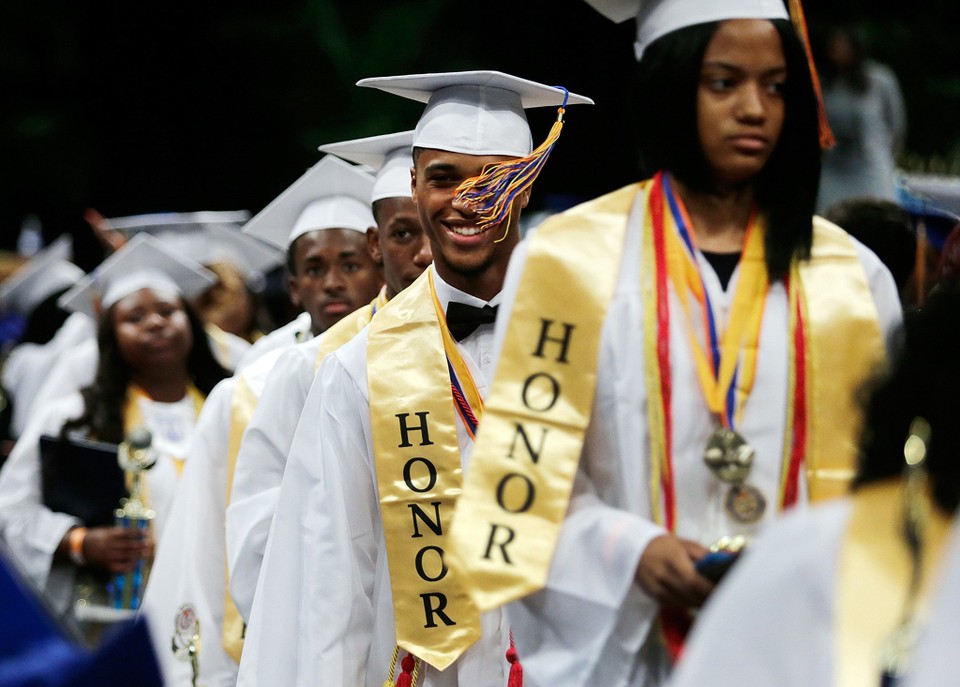Walter Isaacson, former CEO of the Aspen Institute, and Patrick Dobard, CEO of New Schools for New Orleans, wrote the following op-ed for nola.com | The Times-Picayune, published July 1, 2018.
Throughout its history, our hometown of New Orleans, like much of America, has faced a persistent problem: grave educational inequity. In the past 13 years, New Orleans’ educators have decided to tackle it head-on. This summer marks the latest development in New Orleans’ educational story — the city reimagining what a school district can be.
We’ve come a long way in just over a decade. In 2005, academic performance in New Orleans was far behind the rest of the nation, and facilities were crumbling. A few years before, one high school had no working fire alarm system and had to hire people as “fire watchers” to monitor for signs of flame. Another lost nearly all its textbooks to a leak in the ceiling. Of 68 parishes in Louisiana, New Orleans ranked 67th in performance.
Racial injustice played no small part in the problem; resources were unevenly divided, and students suffered. On the 2004 state standardized test, the gap between black and white students’ scores in New Orleans was double the size of the gap statewide. We needed change.
When Hurricane Katrina hit, the problem grew deeper. Schools were flooded, and materials washed away. Damage to buildings alone was estimated at more than $800 million. Sixty-four thousand students were displaced.
The fall of 2005, schools began to reopen. In November, the state-run Recovery School District, or RSD, received oversight of most of New Orleans’ schools. In the years that followed, many became charters — public, open-enrollment schools organized around a “charter” that laid out its vision. They were accountable to the district, but governed by their own board.
With more flexibility to use money and design programming, many schools flourished and grew. Teachers created innovative classroom models. School leaders tried out new designs for the school day. Families and alumni got involved, bringing the best of tradition alongside big hopes for the future. Things weren’t perfect, but there was undeniable progress.
In 2004, for instance, 60 percent of New Orleans’ students went to a school ranked in the bottom tenth of performance statewide. In 2017, only 11 percent did. In 2005, just 37 percent of high school graduates enrolled in college in the fall. Last year, that number was up to 61 percent.
These numbers mark growth, but not victory. All students must attend great schools, and all seniors should graduate ready for college or career. This summer, we take a critical step in building that reality — by unifying all the city’s public schools back to local control.
Today, the RSD returns New Orleans’ schools to the Orleans Parish School Board (OPSB). In doing so, they create a powerful new governing structure, one that could be replicated nationally.
In the new OPSB, funding and focus moves closest to children themselves. Ninety-eight percent of their funds go straight to schools. That is compared to just 85 or 90 percent in many districts nationwide, which spend more on central office administration.
OPSB will be smaller than before, because teachers teach students — bureaucracy doesn’t. Going forward, charter boards and school teams will continue to manage the day-to-day operations of their own schools. The remaining roles for the elected School Board and district leadership target what they’ll do best. They’ll follow a clear plan to manage enrollment, resources and facilities. They’ll authorize new charters and expand successful ones. They’ll set standards and make sure schools hold up their end of the bargain. They’ll help expand early childhood programs and special education services.
They also will harness community resources to support students beyond the classroom. This is critical. Reports have shown that New Orleans’ young people show symptoms of PTSD at a rate three times the national average and that 83 percent of our public school students are economically disadvantaged, compared to roughly half nationwide.
The new OPSB will lean on a network of resources to support our young people. They’ll leverage organizations that work with students with mental health challenges or those involved in the justice system. They’ll connect with partners that help students find internships and career opportunities.
The OPSB is poised for success. Next, the unified system of schools must use its structure as a platform for more change. We must ready students to reach their dreams beyond our classrooms. As schools return to local control this month, we bring that day closer by drawing on the greatest experts we have — educators, parents and students themselves.
In a rebuilding effort filled with local, national and global leaders, our students have impressed us most of all. They are brilliant. They are brave. They are generous. Not so long from now, they’ll usher in an era of innovation we can’t imagine yet.
We owe them schools that prepare them to lead the way.
Walter Isaacson, former CEO of the Aspen Institute, is a professor of history at Tulane University and a member of the New Orleans Planning Commission. He served on the Louisiana Recovery Authority after Hurricane Katrina.
Patrick Dobard, former superintendent of the Recovery School District, is CEO of New Schools for New Orleans.
